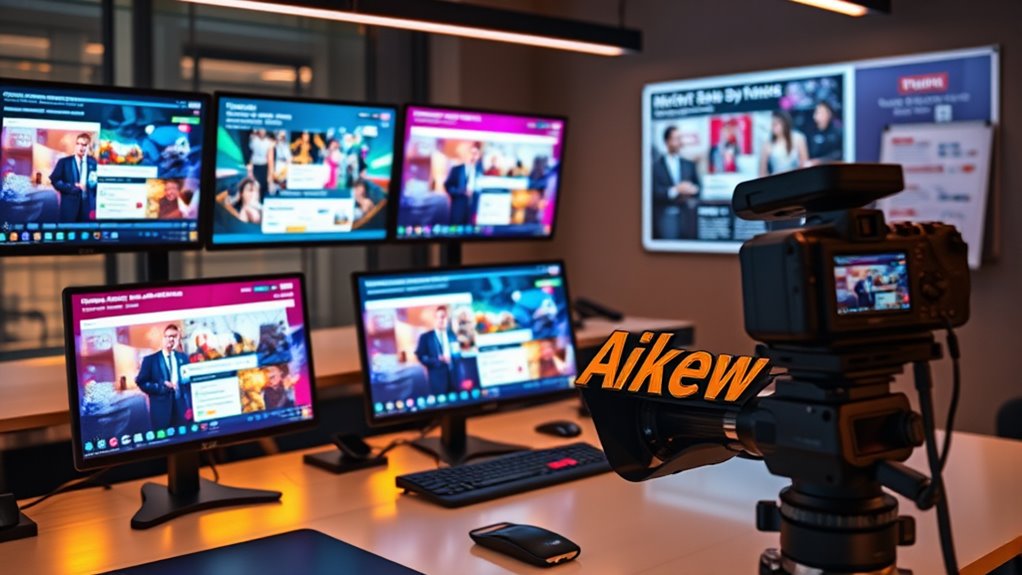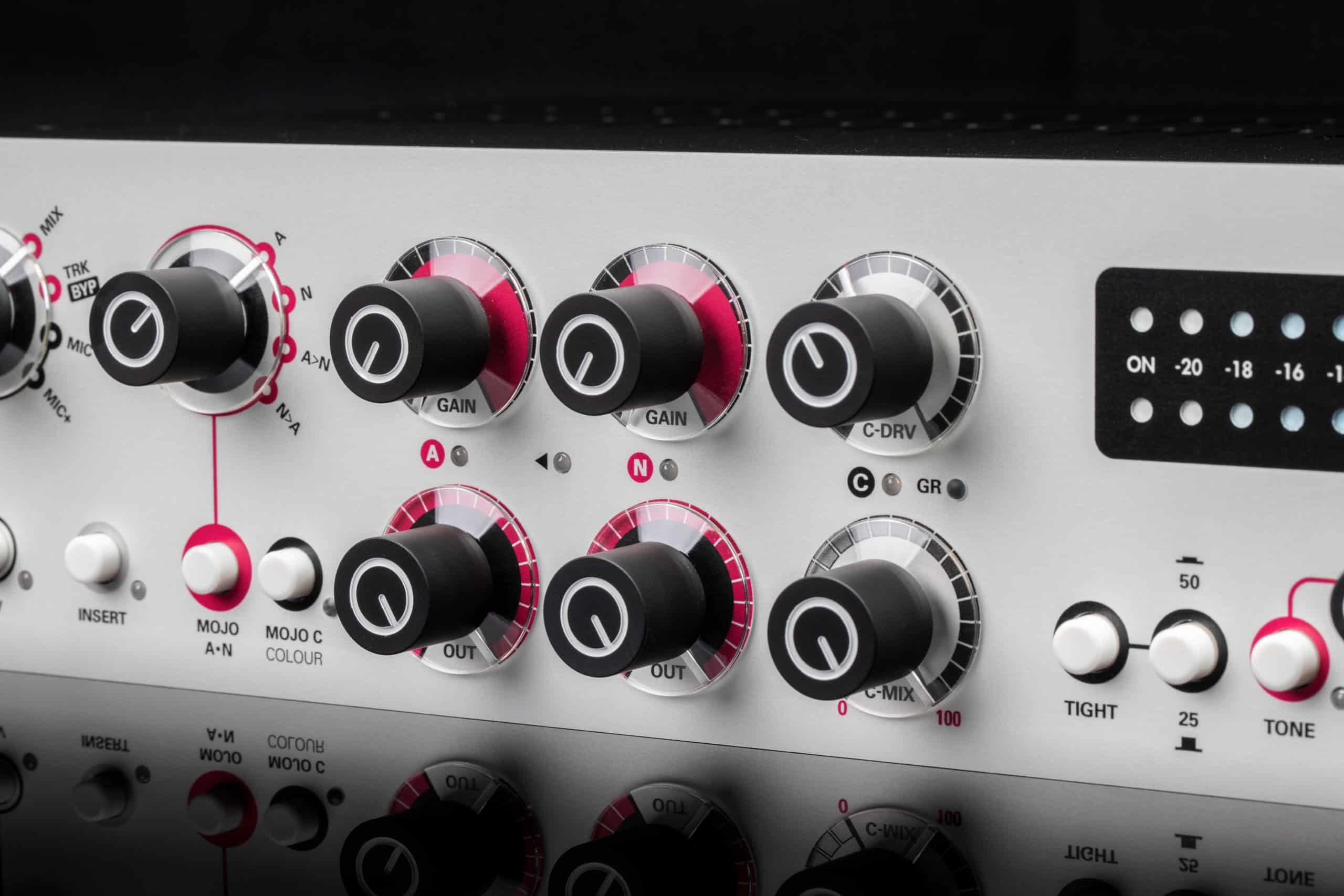Social media advertising lets you reach specific audiences through platforms like Facebook, Instagram, TikTok, and LinkedIn. You’ll want to use tools like Meta Ads Manager for tracking and Canva for creating visuals. Best practices include using catchy headlines, high-quality images, and defining clear goals. Engaging content is key, and leveraging user-generated content can enhance trust. Want to optimize your strategies and stay ahead in this dynamic landscape? There’s more to discover!
Key Takeaways
- Facebook and Instagram offer extensive audience targeting with diverse ad formats for effective engagement across various demographics.
- Utilize tools like Meta Ads Manager and Canva for streamlined ad management and visually appealing content creation.
- Implement A/B testing to compare ad performance and continuously optimize strategies based on insights gained.
- Focus on high-quality visuals and concise messaging to capture attention and foster brand recognition across platforms.
- Leverage user-generated content to enhance authenticity and engagement, potentially increasing conversions and brand trust.
Overview of Social Media Platforms for Advertising

As social media continues to evolve, understanding the various platforms available for advertising is crucial for brands aiming to reach their target audience effectively.
Facebook stands out with over 2.9 billion monthly users, offering detailed audience segmentation and diverse ad formats like image and video.
Facebook’s vast user base and versatile ad formats make it a powerful platform for targeted advertising.
Instagram’s visually driven platform excels for brands with appealing products, utilizing interactive features for high engagement.
TikTok attracts younger audiences through short videos and trend-based advertising.
For B2B, LinkedIn‘s targeted approach connects professionals, while Pinterest serves niche markets, enhancing product discovery.
Each platform boasts unique advertising features, enabling brands to tailor their campaigns for maximum impact and engagement, ensuring that your message reaches the right people effectively.
Key Tools for Effective Social Media Advertising

Effective social media advertising hinges on leveraging the right tools that enhance your campaign’s reach and impact.
Start with Meta Ads Manager for comprehensive ad management across Facebook and Instagram, and use the Facebook Ads Manager App for on-the-go tracking.
For targeted outreach, consider Twitter Advertising and Instagram Advertising to engage diverse audiences.
Utilize Canva for eye-catching visuals and Lumen5 to create dynamic video content.
To boost your influencer strategy, tools like TapInfluence and Buzzsumo can help you connect with the right partners.
Finally, employ analytics tools like Brandwatch and AdEspresso to assess performance and optimize your campaigns.
With these tools, you’ll streamline your efforts and maximize your advertising effectiveness.
Best Practices for Creating Engaging Social Media Ads

Creating engaging social media ads requires a strategic approach that captures attention and drives action. Start with concise, attention-grabbing headlines that spark curiosity or clearly convey value.
Craft compelling social media ads with attention-grabbing headlines that ignite curiosity and highlight value.
In the body, deliver on your promises with informative, punchy sentences that maintain engagement. Use active voice to create a dynamic feel, and leverage emotional triggers like FOMO or happiness to motivate your audience.
Incorporate high-quality images and bold colors that align with your brand while keeping designs simple and clutter-free. Optimize visuals for each platform, and consider video content to tell your story effectively.
Define clear goals, target a specific audience, and link to relevant landing pages to enhance the ad’s impact and performance.
The Impact of User-Generated Content on Advertising

User-generated content (UGC) offers a more authentic alternative to influencer content, making it a powerful tool in your advertising strategy.
By leveraging UGC, you can significantly reduce costs while boosting conversion rates, as real customer experiences resonate more with potential buyers.
Let’s explore how integrating UGC can enhance your advertising effectiveness and improve your bottom line.
UGC Versus Influencer Content
As consumers increasingly seek authenticity in advertising, brands are turning to user-generated content (UGC) and influencer marketing to connect with their audiences.
UGC, created by real customers, feels more genuine, leading 86% of consumers to trust brands that showcase it. In contrast, influencer content is typically polished and often comes with a cost. In addition, the rise of sustainable travel has shown how consumers favor authentic experiences over traditional advertising.
While both strategies drive engagement, UGC fosters organic connections and encourages community building. Influencers can help brands reach specific demographics, but UGC resonates across a broader spectrum of potential customers. Additionally, clickbait listicles serve as an effective way for brands to present UGC in engaging formats that capture consumer interest.
Cost and Conversion Benefits
Brands are increasingly recognizing the cost and conversion advantages of user-generated content in their advertising strategies.
UGC can save you significant production costs—potentially up to $72,000—since it’s often more authentic and relatable than polished content. By integrating UGC, you’ll likely see lower overall marketing expenses and a 50% drop in cost-per-click.
Websites featuring UGC experience a 29% increase in conversions, with customers finding it 93% more helpful when making purchasing decisions. Plus, UGC generates 6.9 times more engagement and 4 times higher click-through rates.
This not only enhances trust but also boosts customer retention, leading to a notable 162% increase in revenue per visitor. Embracing UGC can transform your advertising impact.
Analyzing Statistics on Social Media Advertising Trends

While exploring the landscape of social media advertising, it’s crucial to recognize the staggering scale of its reach and engagement. With around 5.22 billion users, social media represents 63.8% of the global population.
You’ll find that users spend an average of 2 hours and 19 minutes daily on these platforms, with over 90% accessing them via mobile devices. As a marketer, you should note that over 70% of businesses leverage social media for marketing.
Additionally, global ad spend is projected to hit $200 billion by 2025. Platforms like Facebook and Instagram lead in user numbers and engagement, with TikTok boasting a remarkable 2.50% engagement rate.
Understanding these statistics will help you craft effective advertising strategies.
Future Trends in Social Media Advertising

With the rapid evolution of technology, you’ll find that future trends in social media advertising are becoming more dynamic and innovative.
AI integration is at the forefront, personalizing ads and automating tasks based on user preferences. By 2025, expect to see significant growth in AI tools that enhance ad performance through data analysis.
Meanwhile, augmented reality (AR) will transform user engagement, allowing customers to interact with products virtually on platforms like Snapchat and Instagram.
Additionally, shoppable posts will streamline the purchasing process, making it easier for brands to connect with customers.
As influencer marketing continues evolving, brands are investing in tools that leverage edutainment content, integrating influencer strategies into multi-channel approaches for maximum impact. Furthermore, the application of natural language processing in advertising will enable more personalized customer interactions, enhancing overall engagement with targeted ads.
Strategies for Optimizing Ad Performance on Social Media

To optimize ad performance on social media, it’s essential to implement targeted strategies that align with your campaign goals.
Start by defining clear objectives, whether it’s brand awareness or sales, and ensure they’re measurable. Use advanced targeting methods, like demographics and custom audiences, to reach the right people.
Craft compelling creatives with high-quality visuals and concise messaging, including clear CTAs. Consider your ad placement; automatic options can enhance performance, but manual adjustments may be necessary based on results.
Monitor key performance indicators, such as CTR and CPC, in real-time.
Lastly, continuously optimize campaigns using insights from A/B testing and make budget adjustments as needed to maximize your return on investment.
Frequently Asked Questions
How Much Budget Should I Allocate for Social Media Advertising?
When deciding how much budget to allocate for social media advertising, consider setting aside 15-20% of your overall marketing budget for this purpose.
This typically means allocating about 10-15% of your annual revenue.
Focus on your business goals and target audience, and adjust based on industry standards and competition.
Keep an eye on your campaign performance to optimize your spending and ensure you’re getting the best return on investment.
What Demographics Are Most Active on Each Platform?
You might think everyone’s on the same social media platform, but that’s far from true!
On Facebook, users aged 30-49 dominate, while Instagram buzzes with under-35s.
X (formerly Twitter) attracts a young crowd, with 73% under 35, and TikTok is a playground for those aged 18-34.
Gender-wise, Facebook leans male, Instagram balances out, and TikTok skews female.
How Do I Measure Ad Success Beyond Engagement?
To measure ad success beyond engagement, focus on key metrics like conversion rate, ROI, and customer lifetime value.
Evaluate how many users complete desired actions, compare earnings to costs, and assess the long-term value each customer brings.
Keep an eye on cost per click and cost per conversion to manage expenses effectively.
Combining these metrics will give you a clearer picture of your ad performance and overall campaign effectiveness.
Can I Run Ads on Multiple Platforms Simultaneously?
Absolutely, you can run ads on multiple platforms simultaneously!
Think of it as casting a wide net; the more platforms you use, the more diverse your audience becomes. By leveraging different formats and demographics, you expand your reach and minimize risks.
Plus, with tools designed for cross-platform management, it’s easier than ever to maintain your brand’s voice and strategy across all channels.
What Are the Common Mistakes to Avoid in Social Media Advertising?
In social media advertising, you should avoid common mistakes to ensure success.
First, lack of a clear strategy can derail your campaigns. Set measurable goals to guide your efforts and target the right audience to maximize resources.
Consistency in messaging is crucial, as is tracking your results for optimization.
Don’t ignore the power of video or user-generated content, and remember to tailor your approach for each platform to boost engagement.
Conclusion
As you dive into the world of social media advertising, remember that each platform holds unique potential just waiting to be unlocked. With the right tools and best practices, your ads can captivate audiences like never before. But what if I told you that user-generated content could be your secret weapon? As trends evolve, staying ahead will be crucial. Are you ready to harness these strategies and transform your advertising game? The future of your brand depends on it.










